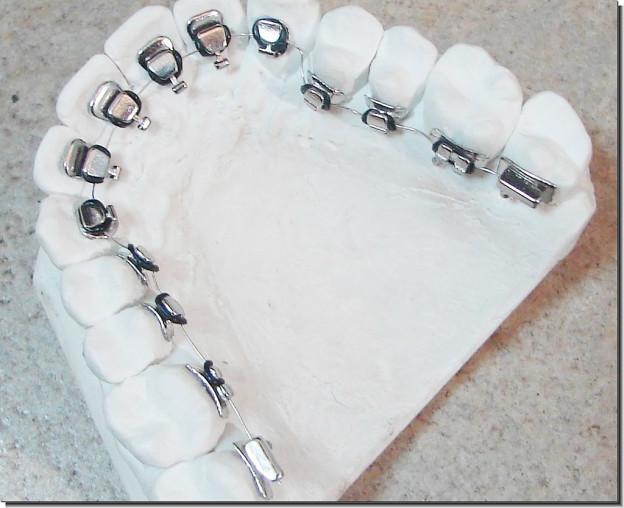If you’re one of the many millions of adults who suffer with crooked or misaligned teeth your best option is to opt for orthodontic treatment. Whether you choose conventional metal braces, ceramic clear fixed braces, or more discreet varieties such as Invisalign Manchester or lingual braces, before and after results can be quite a transformation. In this post, we’re going to focus on lingual braces and take closer look at what they are and how they straighten teeth.
So what are they exactly?
Lingual braces are often referred to as inside braces or hidden braces because rather than being attached to the outside or front of the teeth, they’re secured to the inside or rear (lingua is Latin for tongue). This means that all the metal parts such as brackets and wiring which would normally be visible when you smile or speak, are now hidden behind the teeth. Because of this, nobody need know that you’re wearing them. In fact, it’s fair to say that they’re about as discreet as fixed braces get, and for this reason they are popular with image conscious adults who want straighter teeth but don’t particularly like the image of sporting a mouth full of metal.
How do lingual braces work?
The principle behind lingual braces is the same as any other orthodontic appliance such as ceramic clear fixed braces or aligner style braces such as Invisalign. Manchester patients may be surprised to learn that aside from the way they’re attached they really are no different. Just like standard braces, tensioning wires threaded through brackets work to apply gentle sustained force on the teeth. Over a period of time (this could be anywhere from 9-24 months) the teeth gradually move and eventually realign. The only real difference is that any force applied is carried out on the back of the teeth and not the front.
Are lingual braces difficult to wear?
Like conventional fixed braces, they may take a little getting used to. Because they’re attached to the back of the teeth they can interfere with the tongue causing a slight lisp when speaking. However, the good news is that this is normally only short lived and most people (after some practice) return to speaking normally within a few weeks. In addition and again, like many other types of fixed brace system, patients may experience slight discomfort for a few days after adjustment appointments. However any discomfort felt soon dissipates as your teeth get used to the new applied force.
So are lingual braces worth it?
For the vast majority of patients the difference in appearance between lingual braces before and after pictures is astounding. As well as a perfect straight smile, patients can experience an improved bite, improved oral health, and an all-round healthier you!
For more information about lingual braces, clear fixed braces, fast orthodontic treatments, or aligner style appliances such as Invisalign, Manchester-based Church Road dental and Cosmetics is the place to go. Dr Shi Karim and the team have a wealth of experience in orthodontics and have the ability to correct any dental problems no matter how severe. To find out more, why not contact us on 0161 660 1218 and book a no-obligation consultation today.


